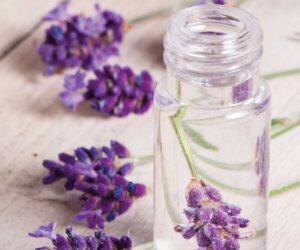It’s difficult to say what price a person would be willing to pay for a chance to stay forever young. Ponce de Leon’s rumored lifelong quest for the mythical Fountain of Youth gives a good idea. Many people are willing to go to great lengths to reverse the signs of aging.
Ironically, youthfulness sometimes isn’t truly appreciated by the young. Instead, it’s most tragically valued once it begins to slip away. Though the fabled Fountain of Youth doesn’t exist, there are treatments that come surprisingly close. If you’ve noticed wrinkles, age spots, saggy skin, and other common signs of aging, consider these five treatments.
1. Tretinoin Cream
Tretinoin cream is commonly prescribed for adult acne. While it’s great for this intended purpose, many people don’t realize it can also help combat signs of aging. The active ingredient in this cream is tretinoin, which is a retinoid with various skin benefits. It helps boost collagen production and cell turnover, which helps slow the development of age spots. It also unblocks the pores and thus reduces blackheads and whiteheads.
It’s important to understand that tretinoin cream isn’t a miracle worker. It doesn’t get rid of deep wrinkles in your skin. It does, however, firm the skin by helping it produce more collagen. It is a great solution for minimizing fine lines and surface wrinkles. It’s also effective for reducing unwanted pigmentation and helping the skin heal from sun damage.
2. Microdermabrasion
Wrinkles are a natural and unavoidable part of the aging process. But that doesn’t mean you can’t do things to minimize their appearance. If you’re tired of watching frown lines, smile lines, or concentration lines develop on your face, microdermabrasion may help. This treatment involves removing the outermost layer of skin to reveal the more youthful skin hiding beneath.
During microdermabrasion, dead and dull skin cells are typically removed using microscopic crystals or another type of exfoliant. Often, microdermabrasion treatment also involves infusing the skin with highly nutritious and hydrating creams or serums. These help to firm and nourish the skin for a younger appearance.
3. Laser Treatments
Laser treatments are exceptional for combatting age spots and other common signs of aging. There are many different types of laser skin treatments, but they can be broadly divided into two main types: ablative and non-ablative. You need to understand the difference between those two types so you can choose the right type for your skincare needs.
Ablative laser skin resurfacing involves removing the top layers of the skin using laser technology. This allows the skin to repair and replenish itself. The end result is typically smoother, firmer skin with fewer signs of age spots. Non-ablative lasers, on the other hand, create micro-injuries to the skin instead of removing the outer layers. The body responds to these micro-injuries by boosting collagen and blood flow to the area.
Both ablative and non-ablative laser treatments result in younger-looking skin. However, ablative options deliver more dramatic results than non-ablative approaches. Ablative treatments are also more aggressive and often require patients to take a week off work while they recover. Non-ablative treatments, on the other hand, only require a few days of downtime for recovery.
4. Chemical Peels
A chemical peel is a type of skin-resurfacing treatment. A light chemical peel removes the skin’s most outer layer and treats wrinkles, acne, and uneven skin tone. A medium chemical peel removes skin from both the outer and middle layers of the skin. It reduces wrinkles, uneven skin tone, and acne scars. A deep chemical peel targets deeper skin layers. It is typically limited to the treatment of precancerous growths, deep wrinkles, and scars.
Chemical peels cannot completely remove deep wrinkles. However, they can help minimize their appearance. The deeper the chemical peel, the more dramatic the healing time and the visible results. When administered properly by a skilled provider, chemical peels have the potential to significantly reduce the appearance of aging in the skin.
5. Surgery
Some people experience dramatically drooping eyelids as they age. This condition is often referred to as eyelid ptosis, and there is no way to prevent it. As the human body grows older, the levator muscle starts to stretch out. This is the muscle that lifts the eyelid. When it stretches out, the eyelid simply begins to droop.
For people with age-related drooping eyelids, surgery may be the most effective treatment option available. During eyelid surgery, a surgeon makes an incision in or near the eyelid’s natural crease. Then, the surgeon repositions the eyelid, removes excess skin and fat, and readjusts muscles. The procedure is performed on an outpatient basis and helps to raise the eyelid to a more youthful-looking position.
Researchers have been searching for a veritable “Fountain of Youth” for decades without luck. It’s unlikely that there will ever be a cure for aging. However, there are products that can help slow down the visible effects of this natural process. Whether you have fine lines around your eyes or more obvious signs of aging such as saggy skin or drooping eyelids, try the treatments above. They can help boost collagen production, reduce age spots, and turn back the clock on your skin’s aging processes.



